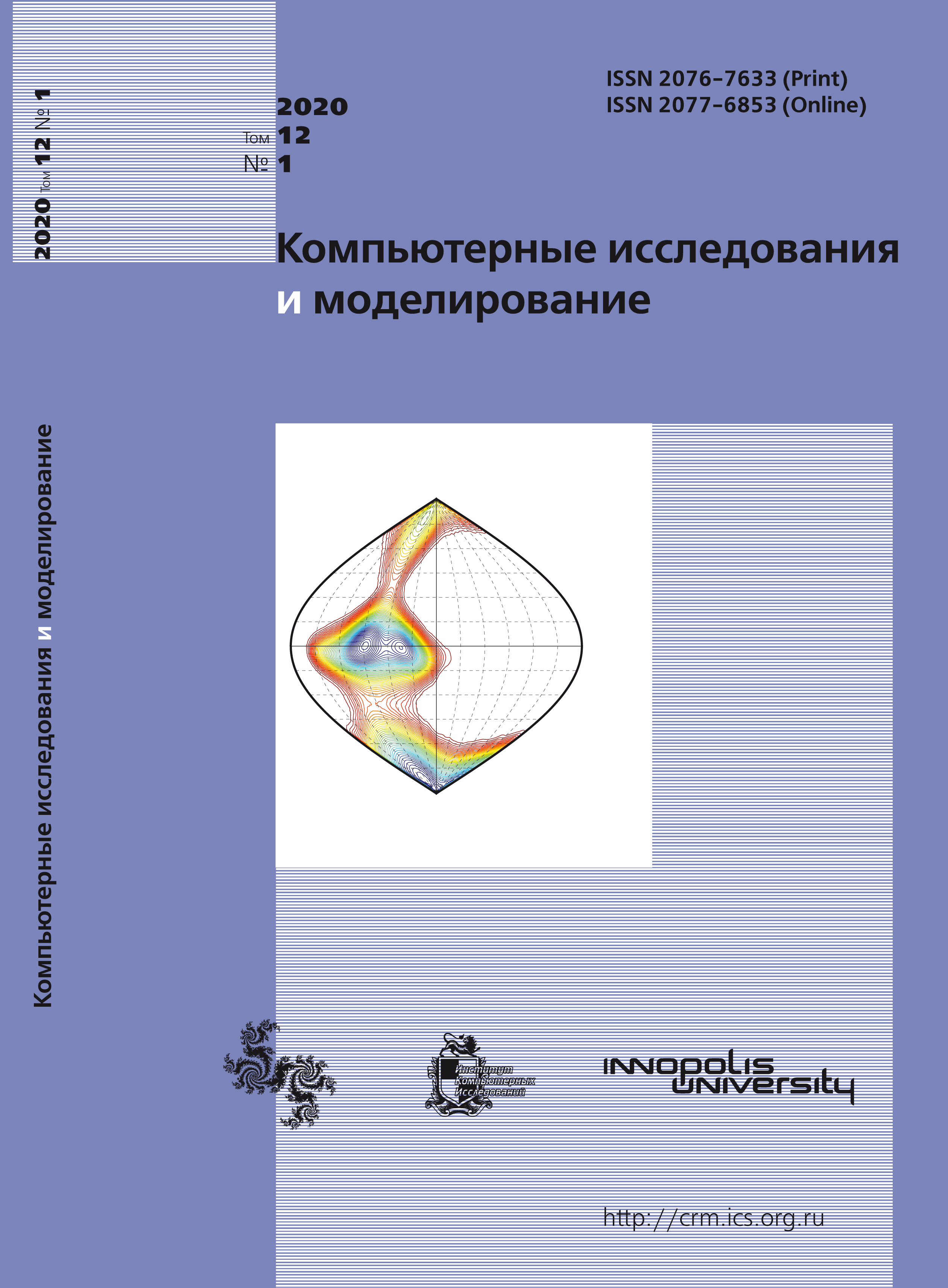All issues
- 2025 Vol. 17
- 2024 Vol. 16
- 2023 Vol. 15
- 2022 Vol. 14
- 2021 Vol. 13
- 2020 Vol. 12
- 2019 Vol. 11
- 2018 Vol. 10
- 2017 Vol. 9
- 2016 Vol. 8
- 2015 Vol. 7
- 2014 Vol. 6
- 2013 Vol. 5
- 2012 Vol. 4
- 2011 Vol. 3
- 2010 Vol. 2
- 2009 Vol. 1
Analysis of taxis-driven instability of a predator–prey system through the plankton community model
 pdf (1038K)
pdf (1038K)
The paper deals with a prey-predator model, which describes the spatiotemporal dynamics of plankton community and the nutrients. The system is described by reaction-diffusion-advection equations in a onedimensional vertical column of water in the surface layer. Advective term of the predator equation represents the vertical movements of zooplankton with velocity, which is assumed to be proportional to the gradient of phytoplankton density. This study aimed to determine the conditions under which these movements (taxis) lead to the spatially heterogeneous structures generated by the system. Assuming diffusion coefficients of all model components to be equal the instability of the system in the vicinity of stationary homogeneous state with respect to small inhomogeneous perturbations is analyzed.
Necessary conditions for the flow-induced instability were obtained through linear stability analysis. Depending on the local kinetics parameters, increasing the taxis rate leads to Turing or wave instability. This fact is in good agreement with conditions for the emergence of spatial and spatiotemporal patterns in a minimal phytoplankton–zooplankton model after flow-induced instabilities derived by other authors. This mechanism of generating patchiness is more general than the Turing mechanism, which depends on strong conditions on the diffusion coefficients.
While the taxis exceeding a certain critical value, the wave number corresponding to the fastest growing mode remains unchanged. This value determines the type of spatial structure. In support of obtained results, the paper presents the spatiotemporal dynamics of the model components demonstrating Turing-type pattern and standing wave pattern.
Copyright © 2020 Giricheva E.E.
Indexed in Scopus
Full-text version of the journal is also available on the web site of the scientific electronic library eLIBRARY.RU
The journal is included in the Russian Science Citation Index
The journal is included in the RSCI
International Interdisciplinary Conference "Mathematics. Computing. Education"






